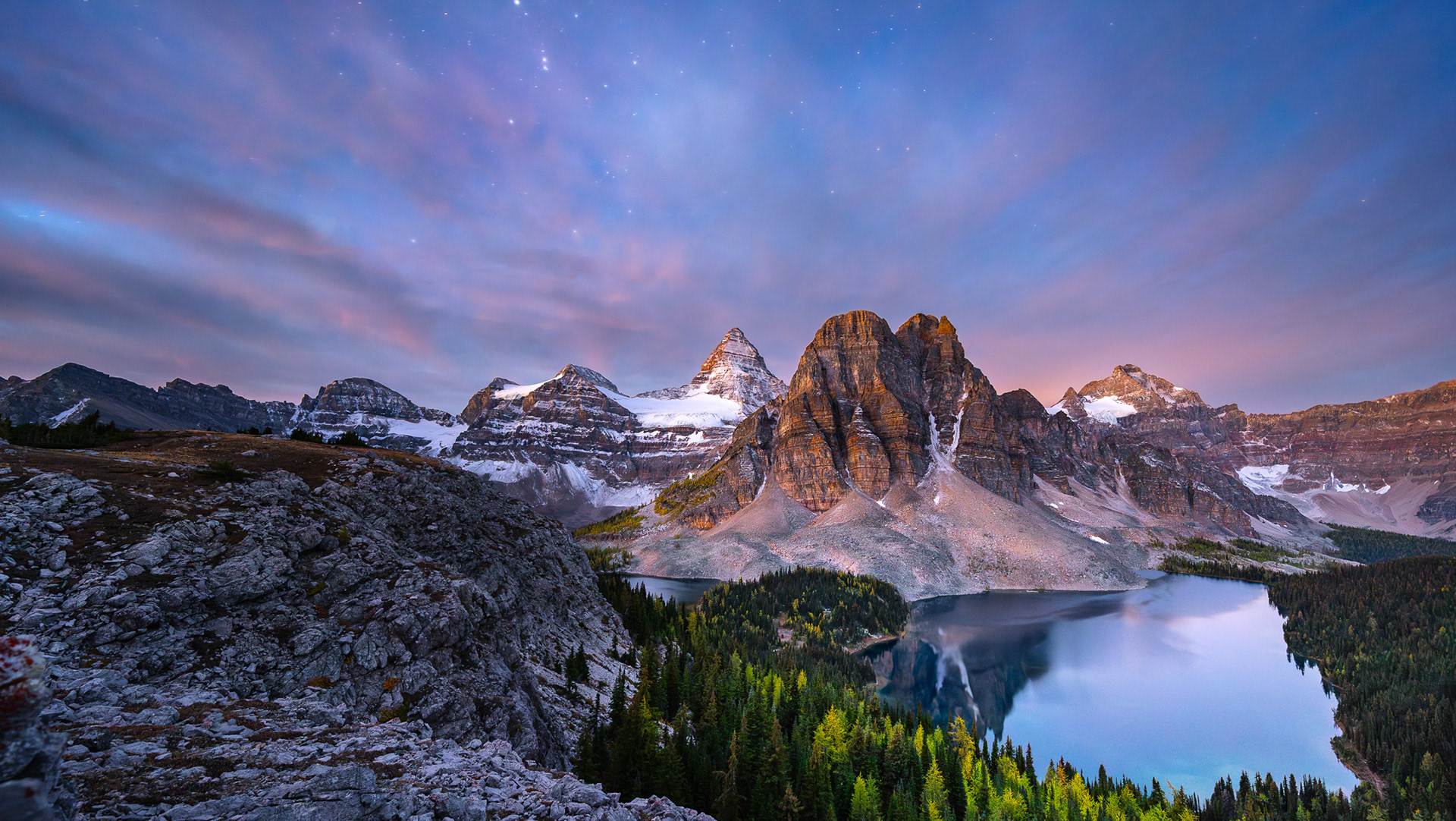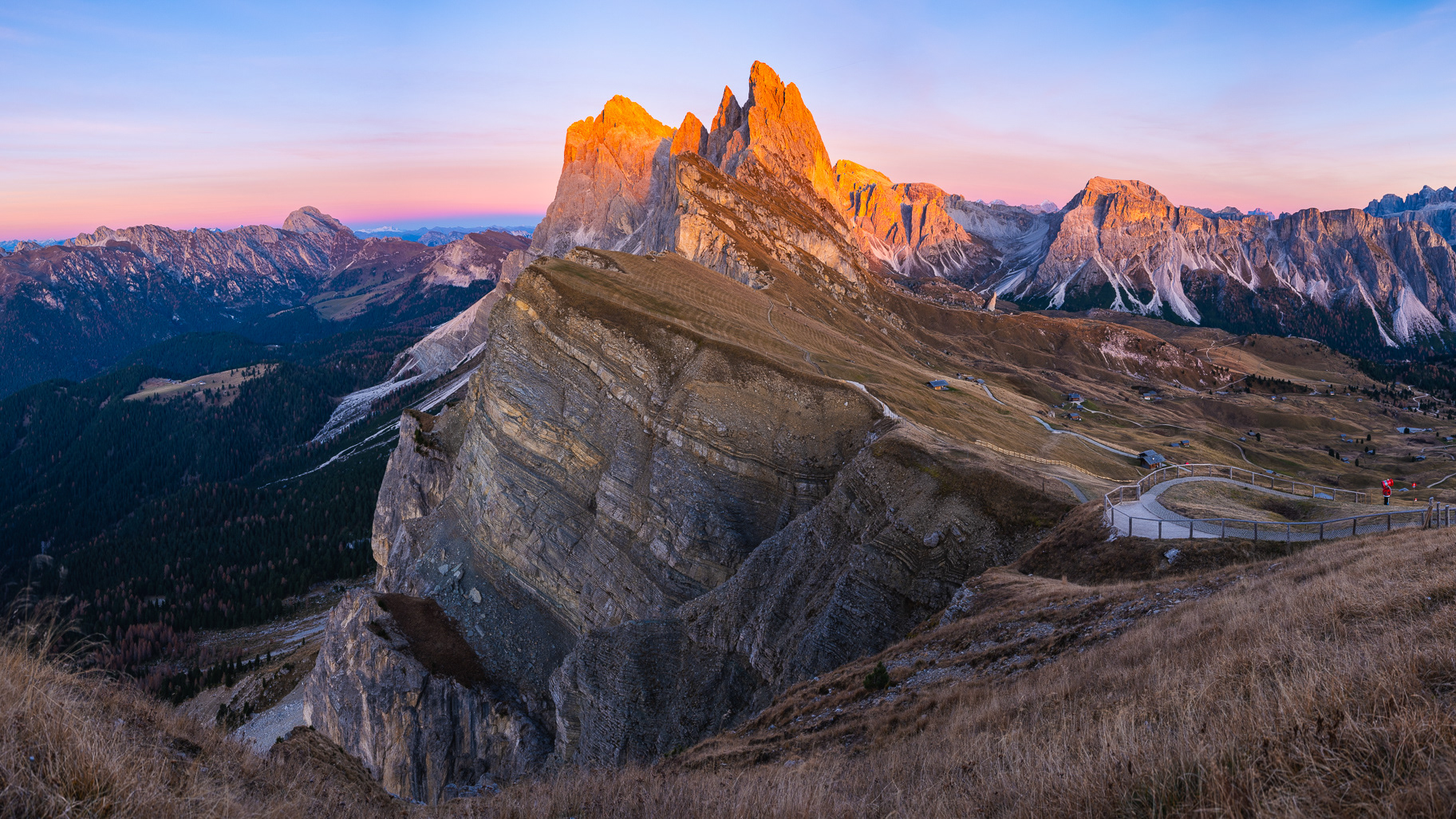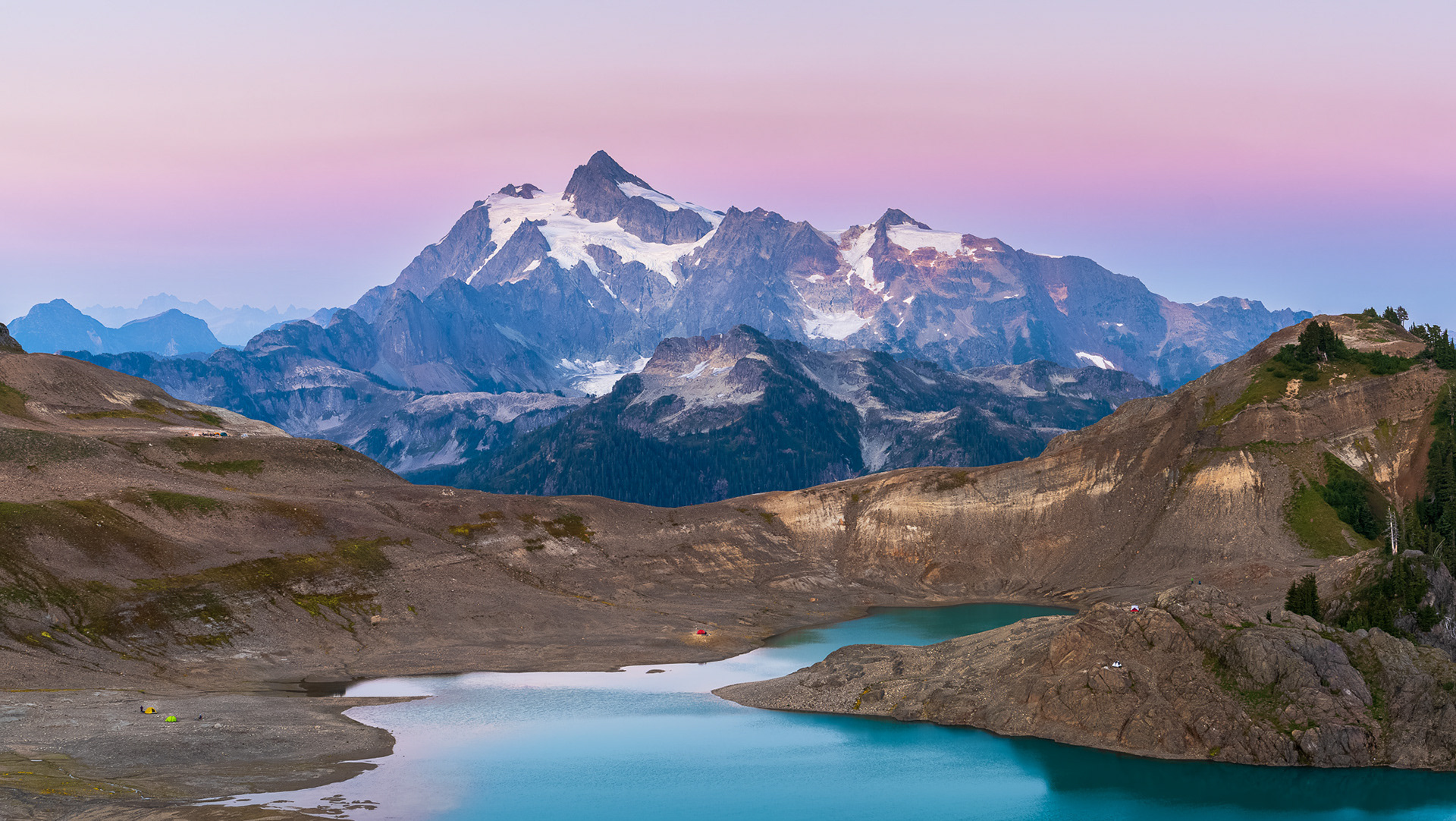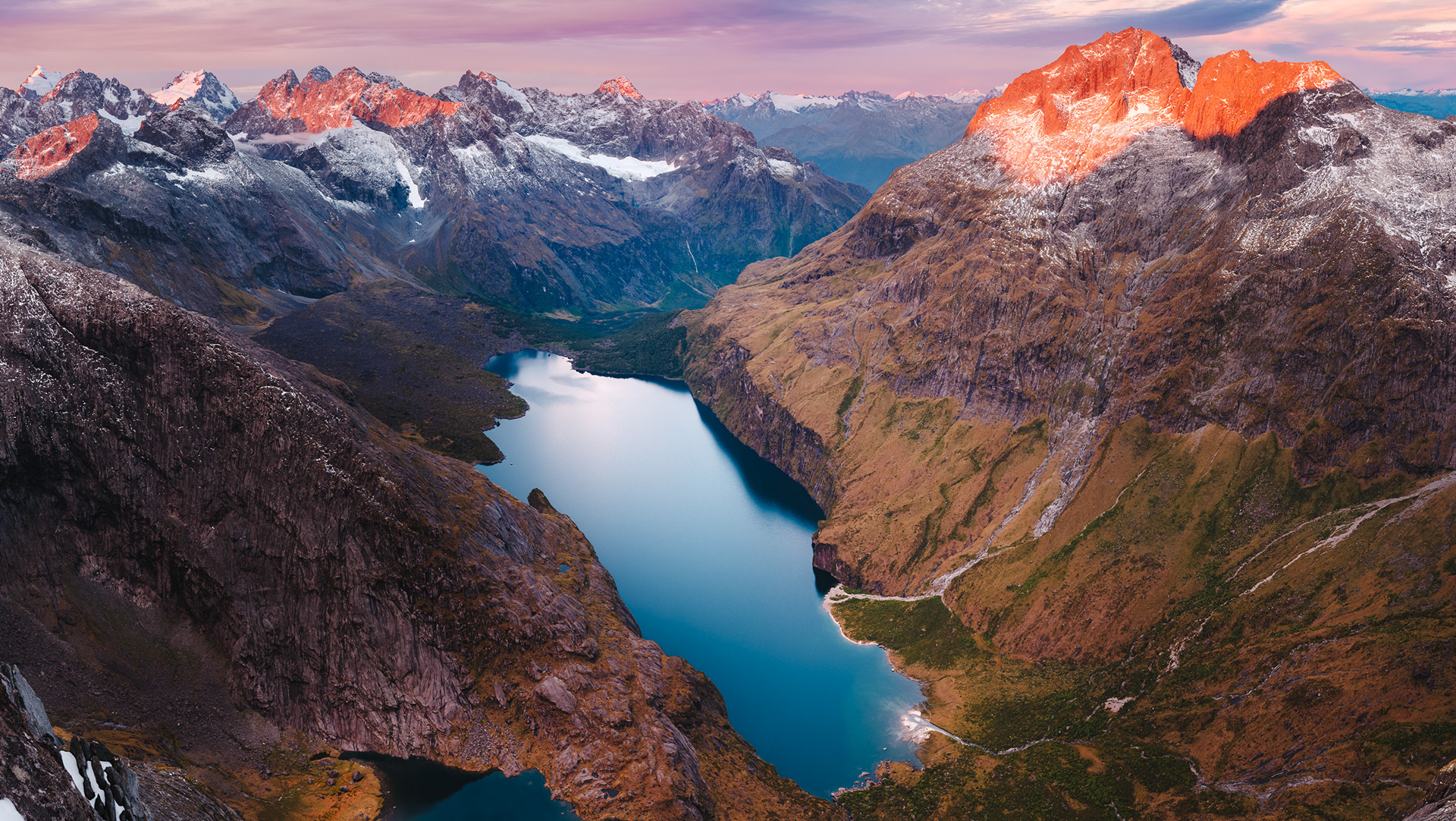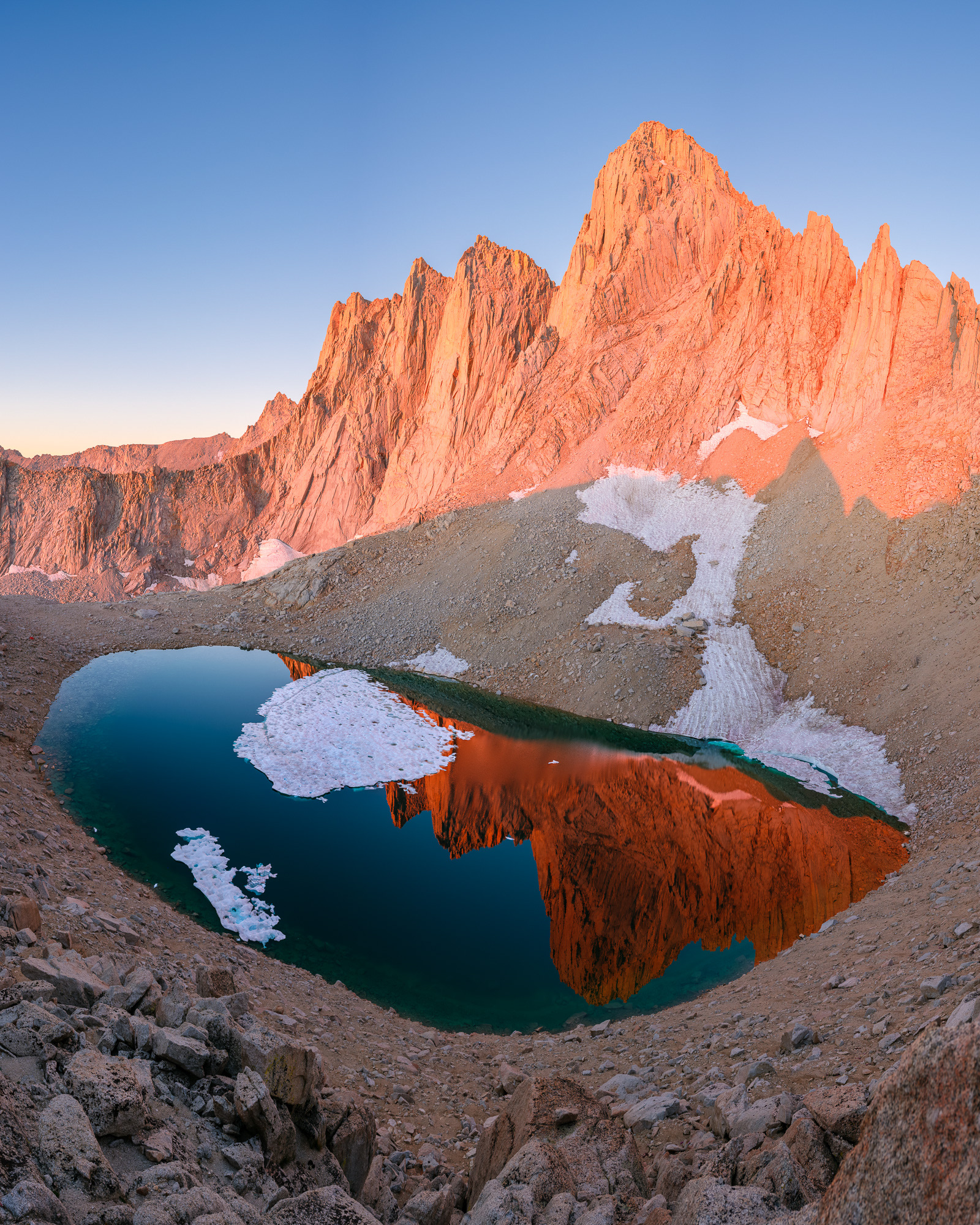

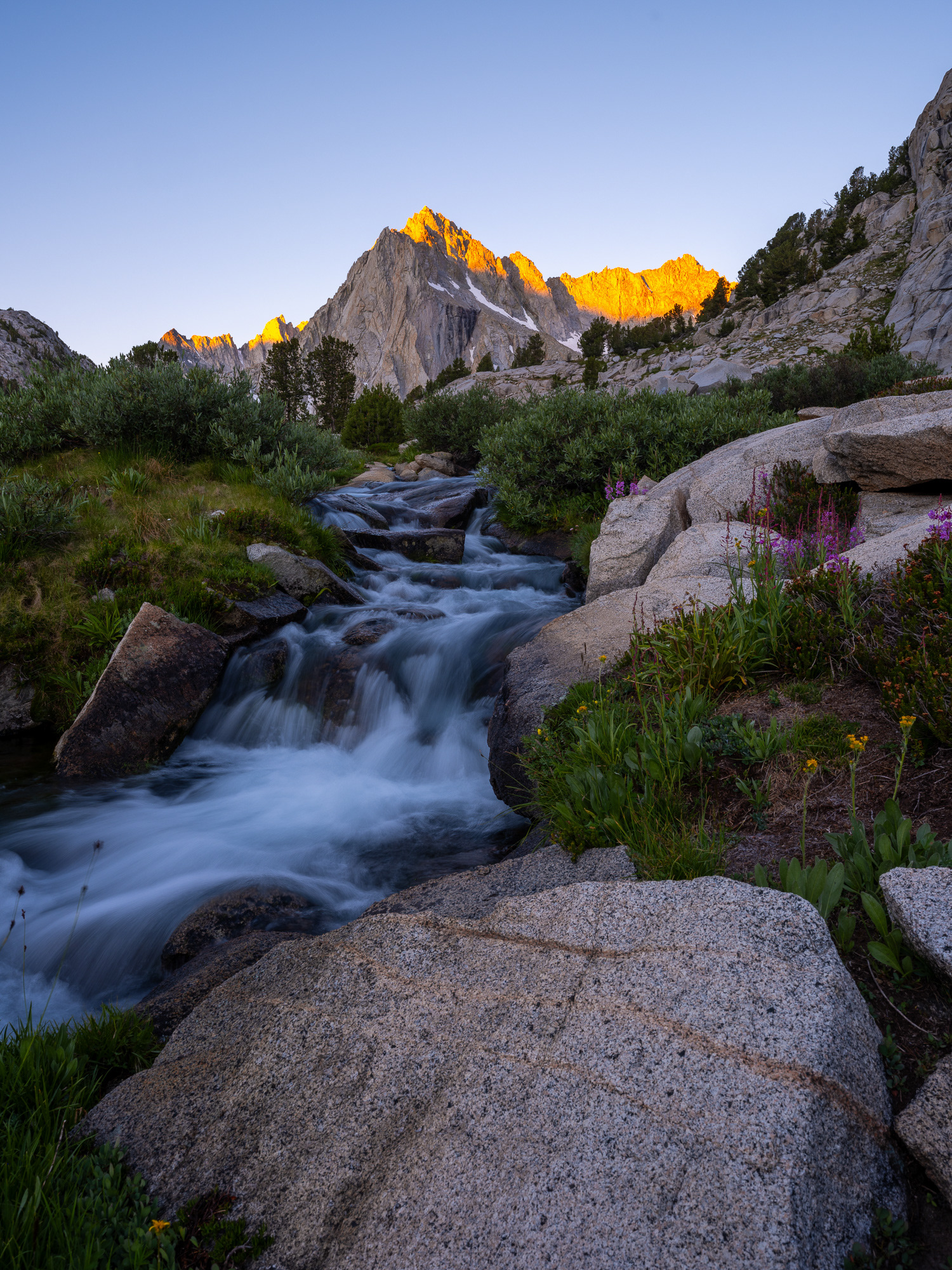
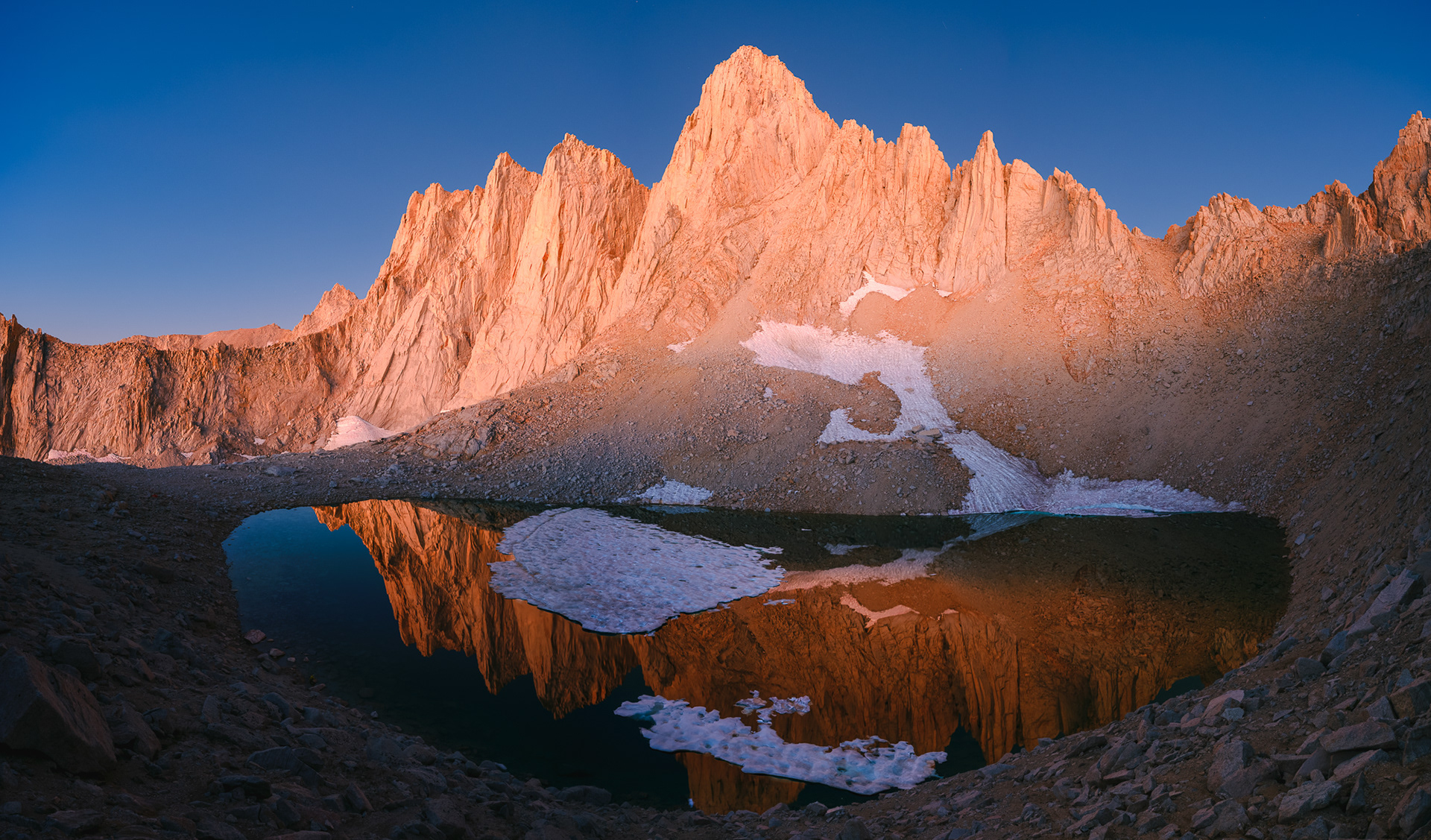
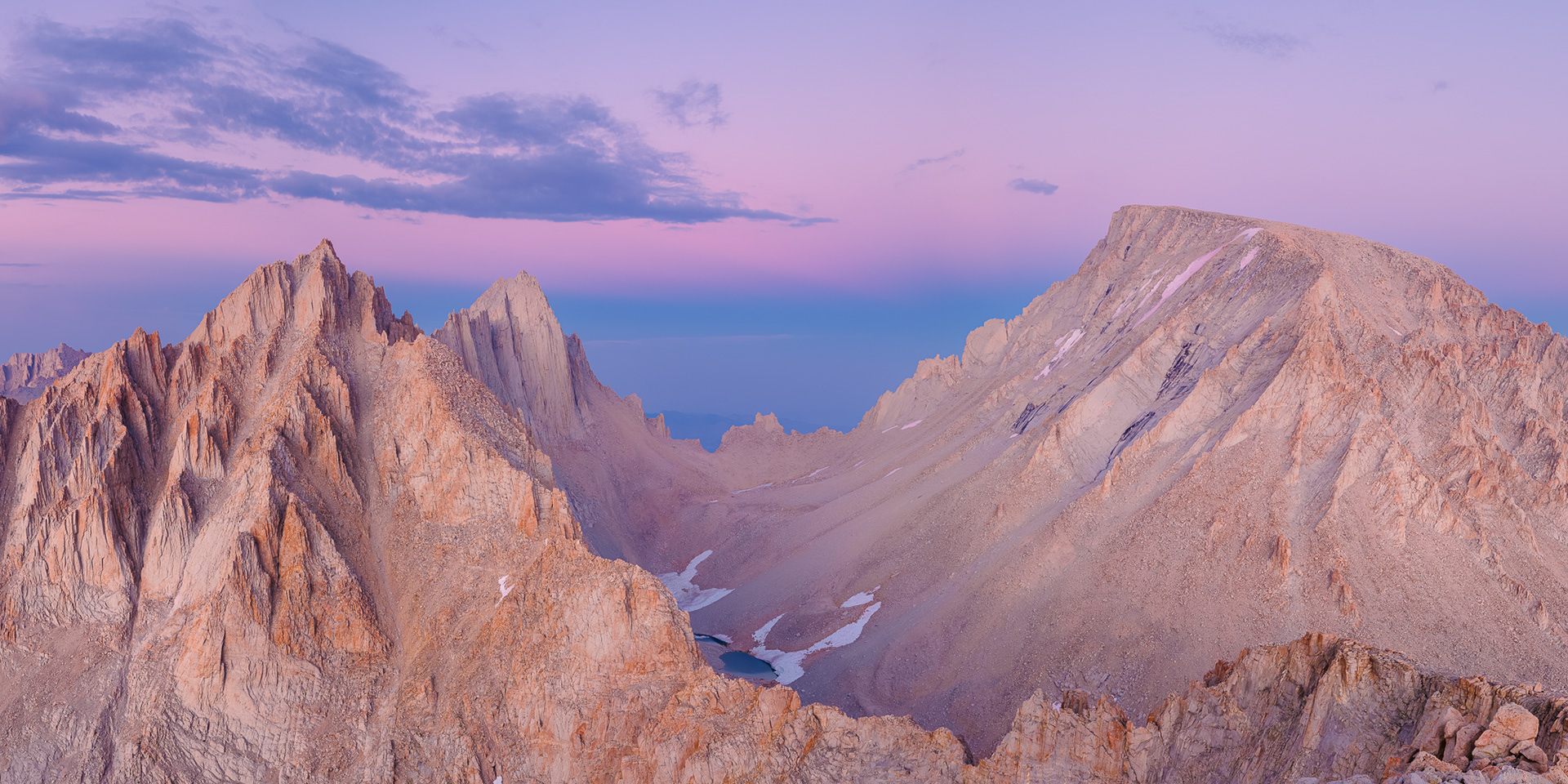
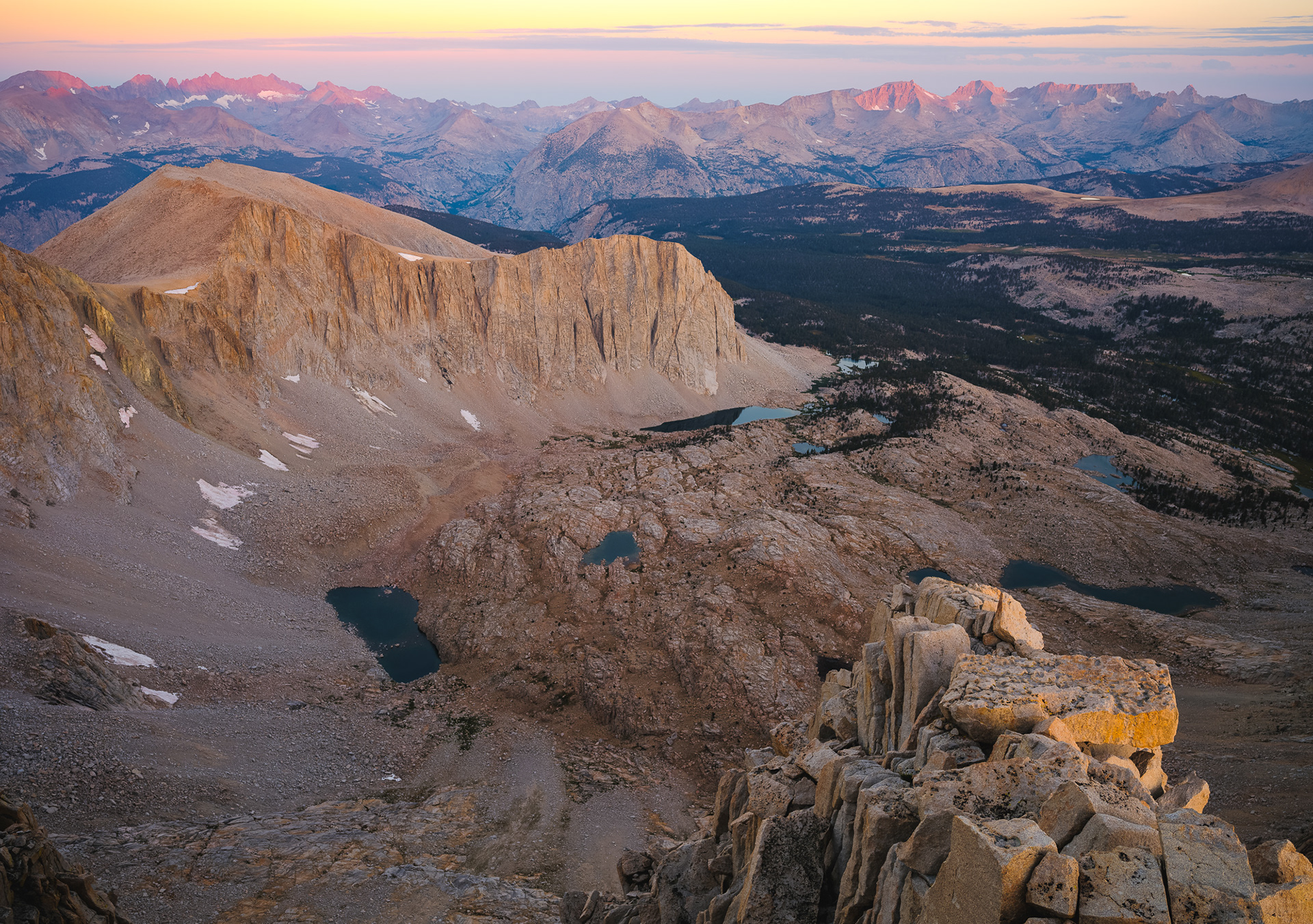
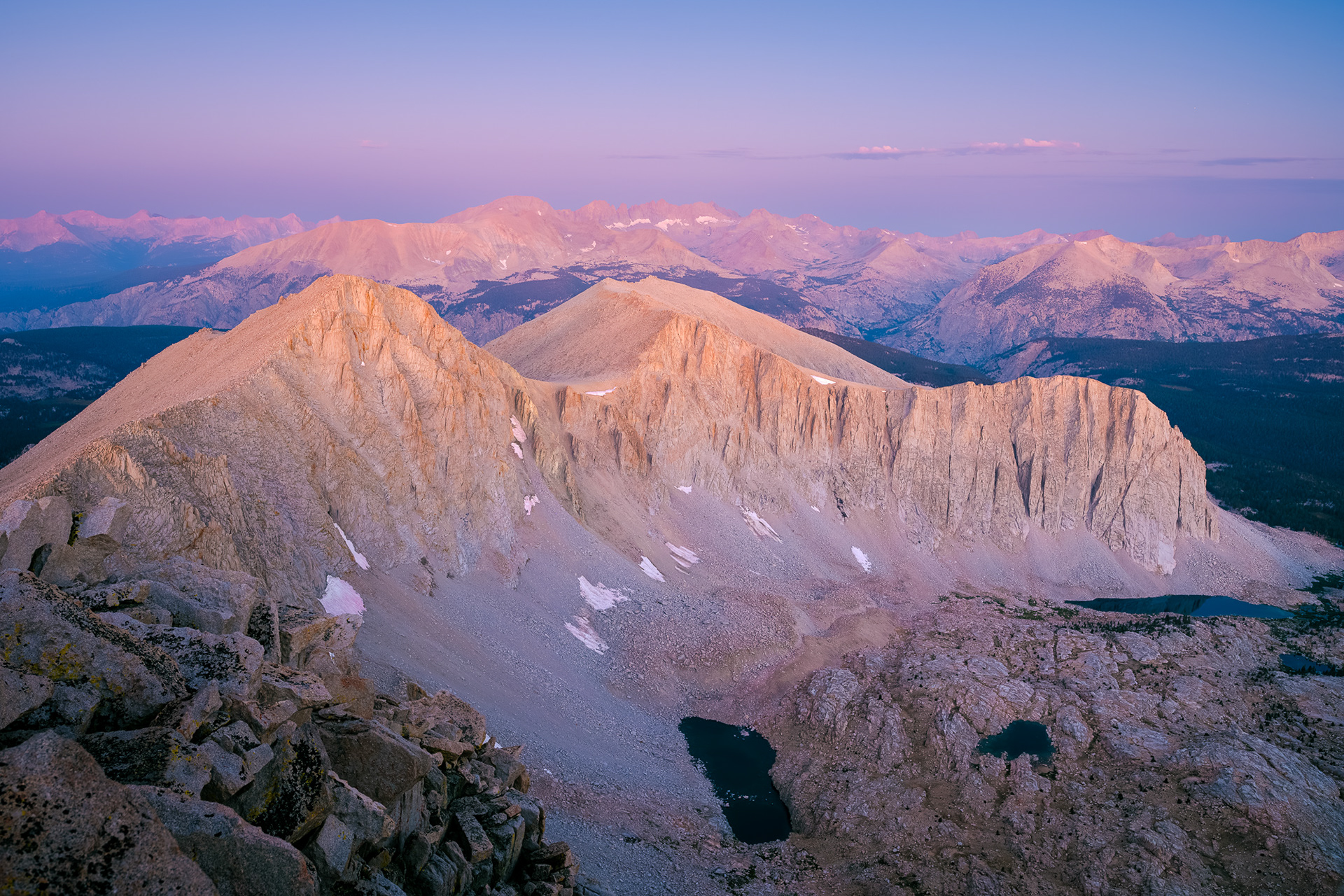

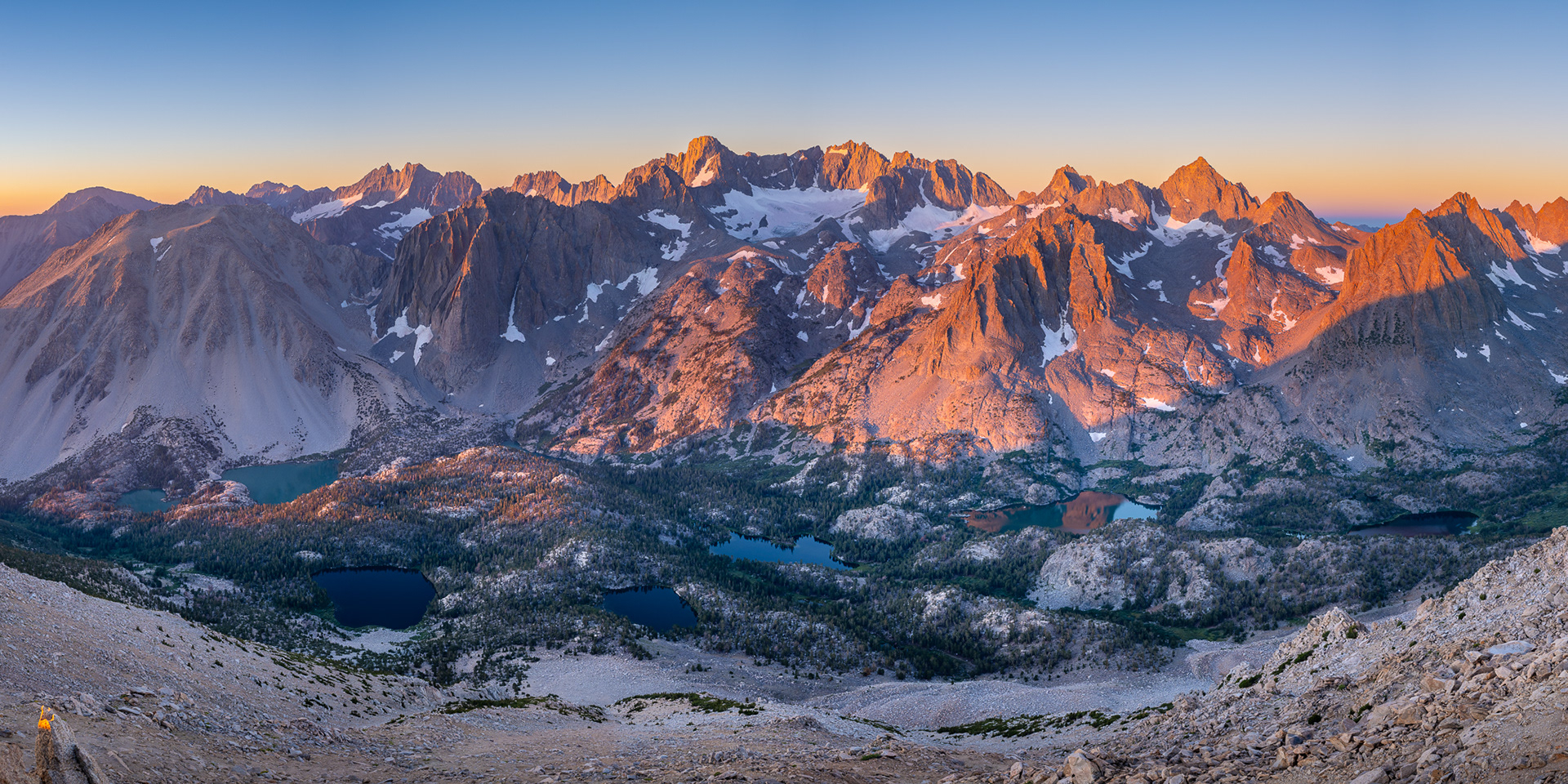
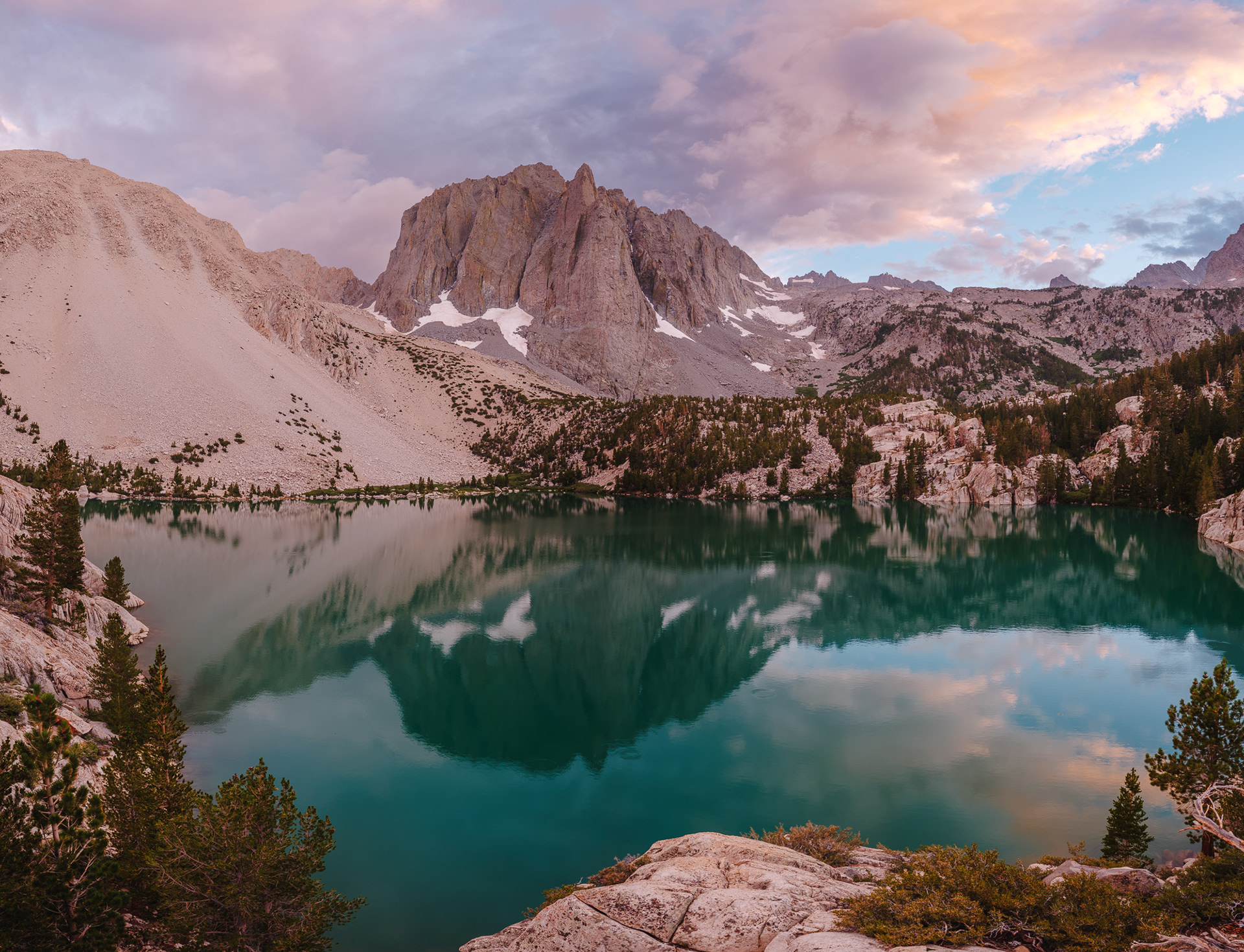

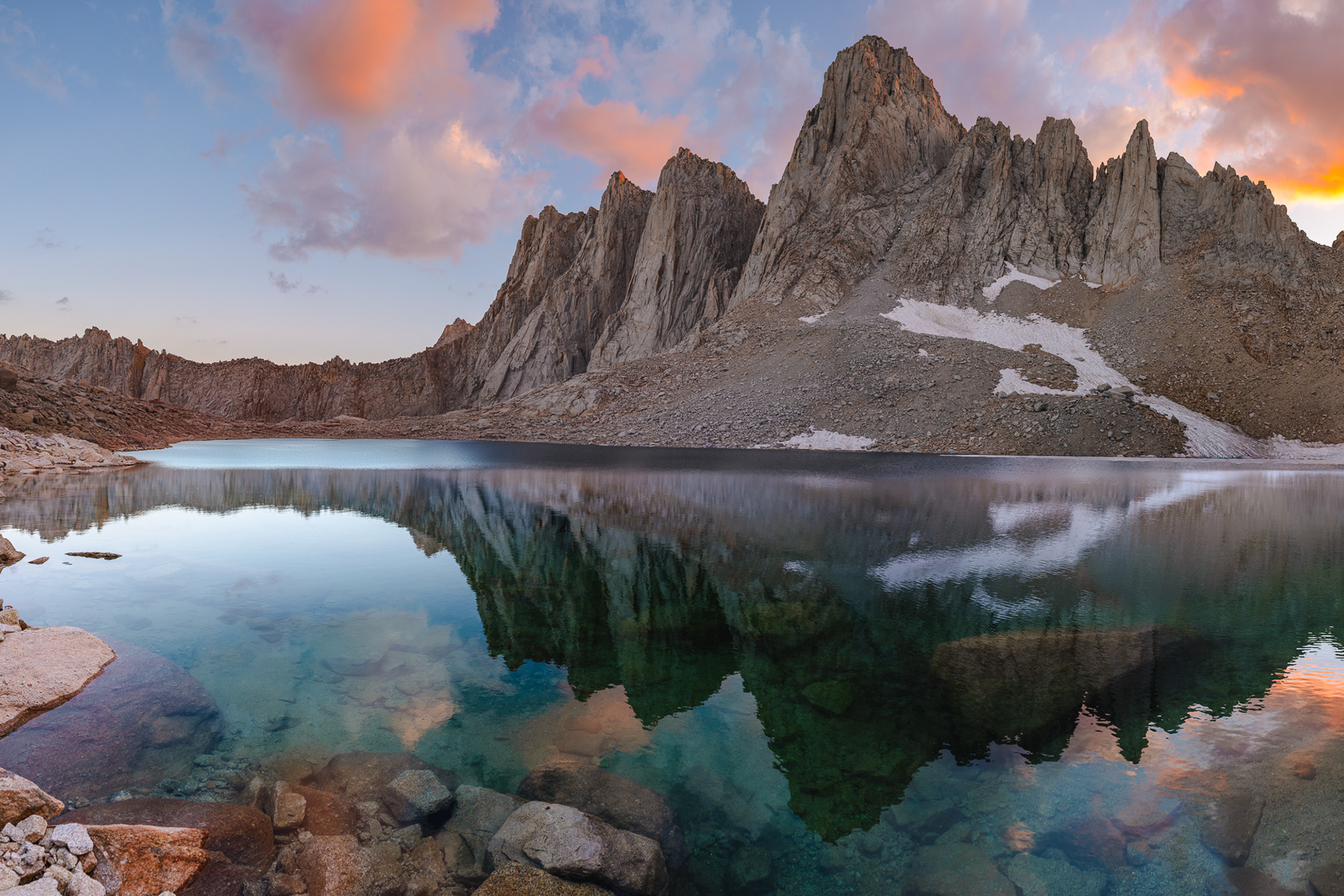
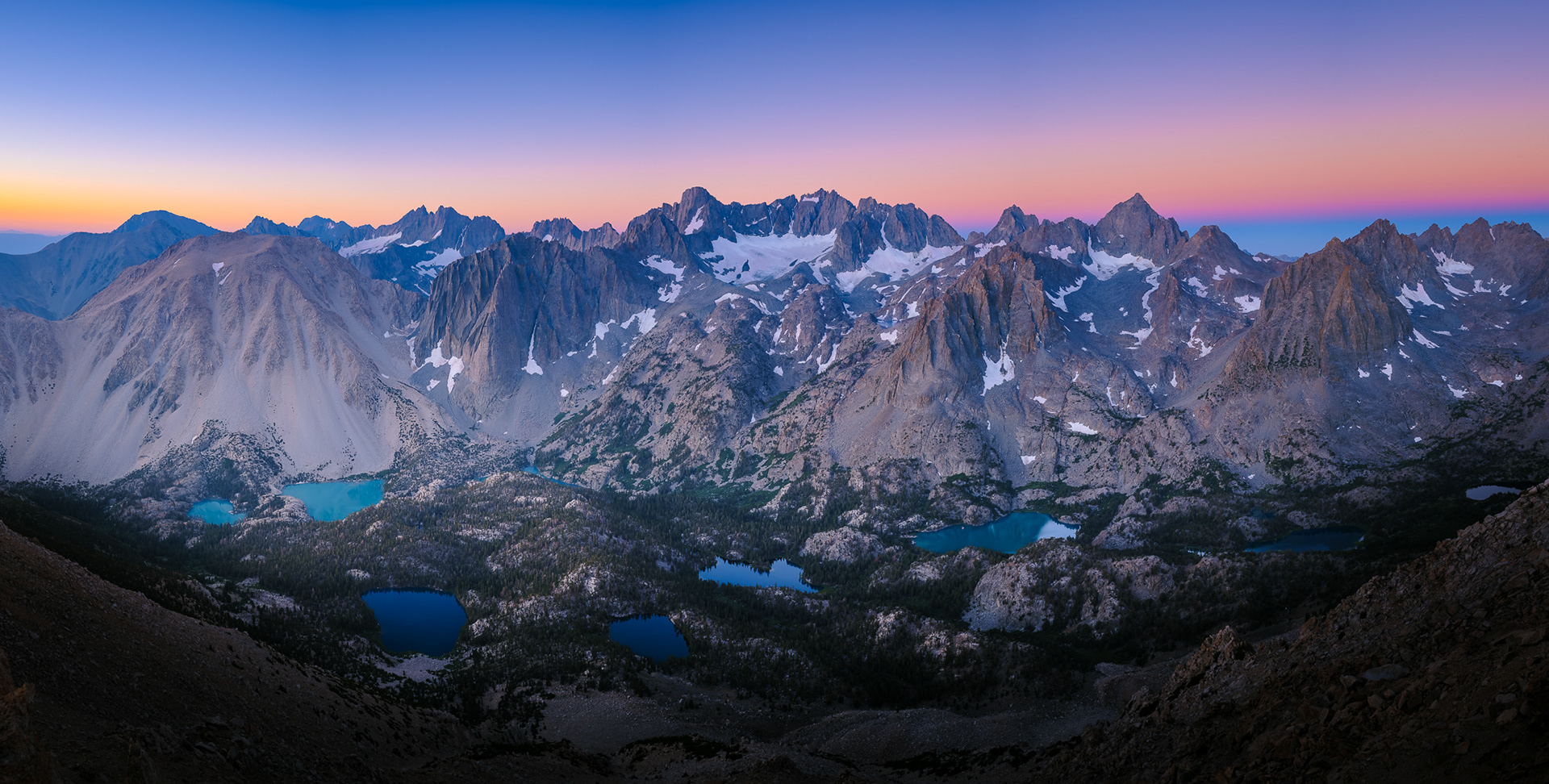
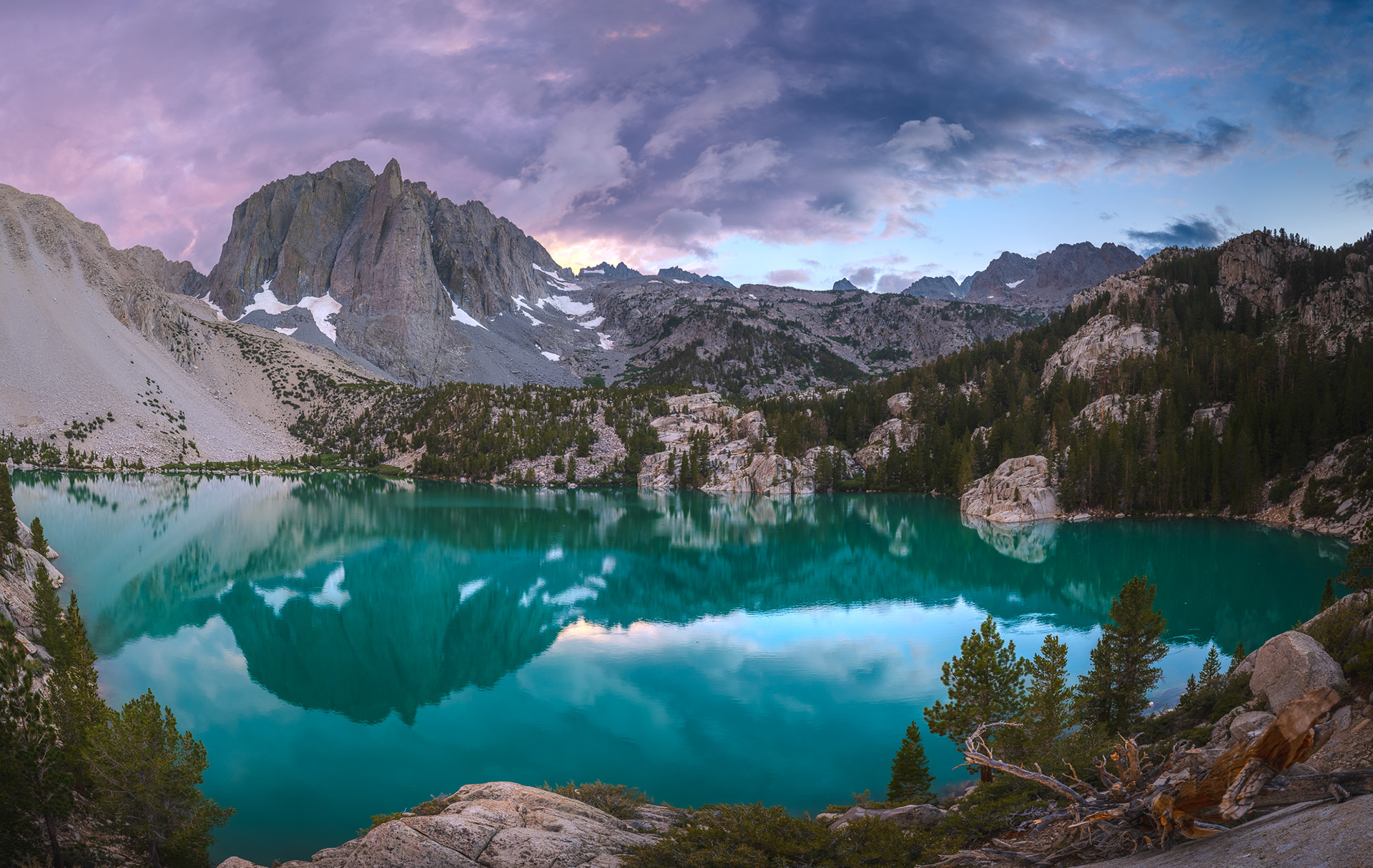
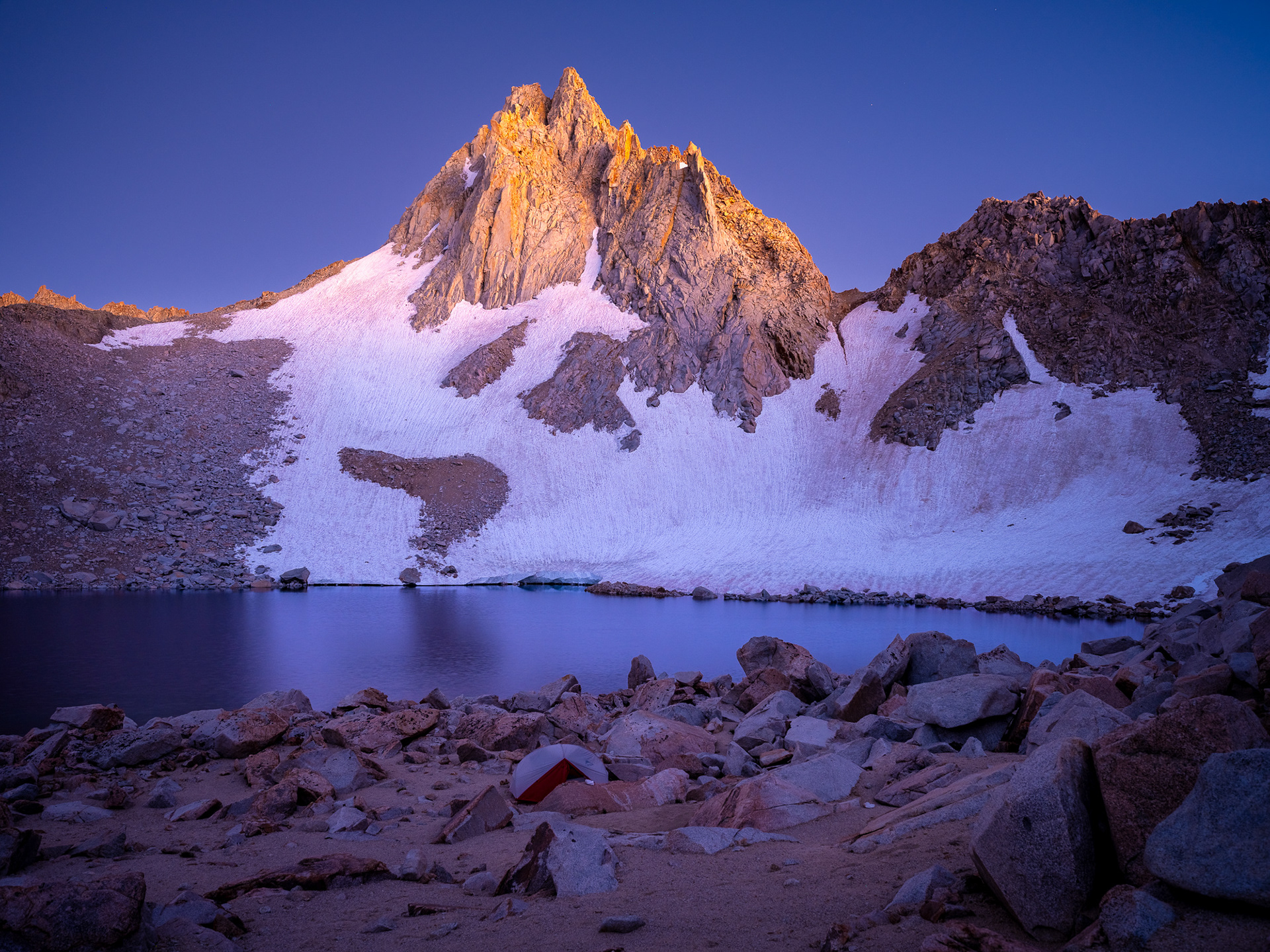
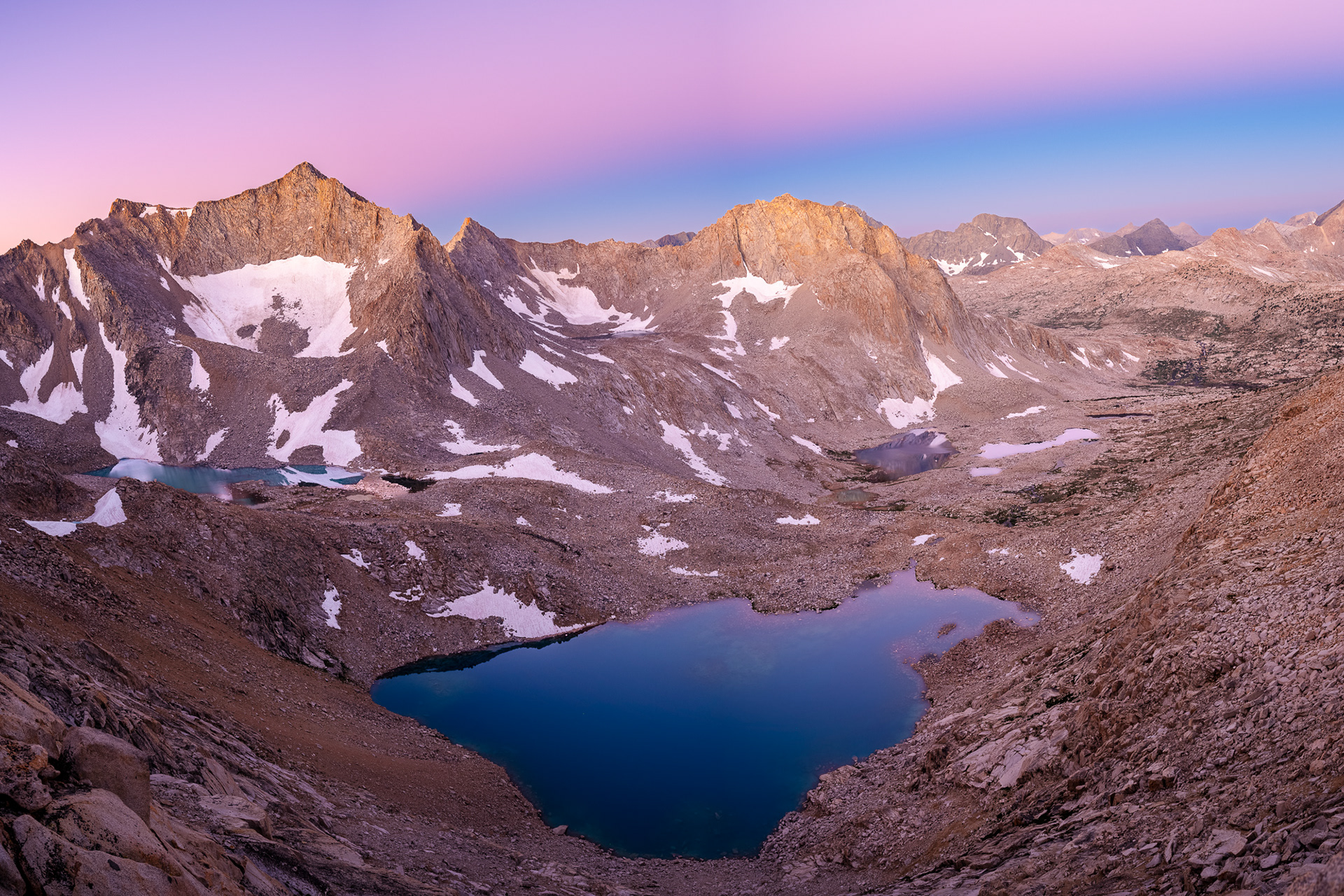
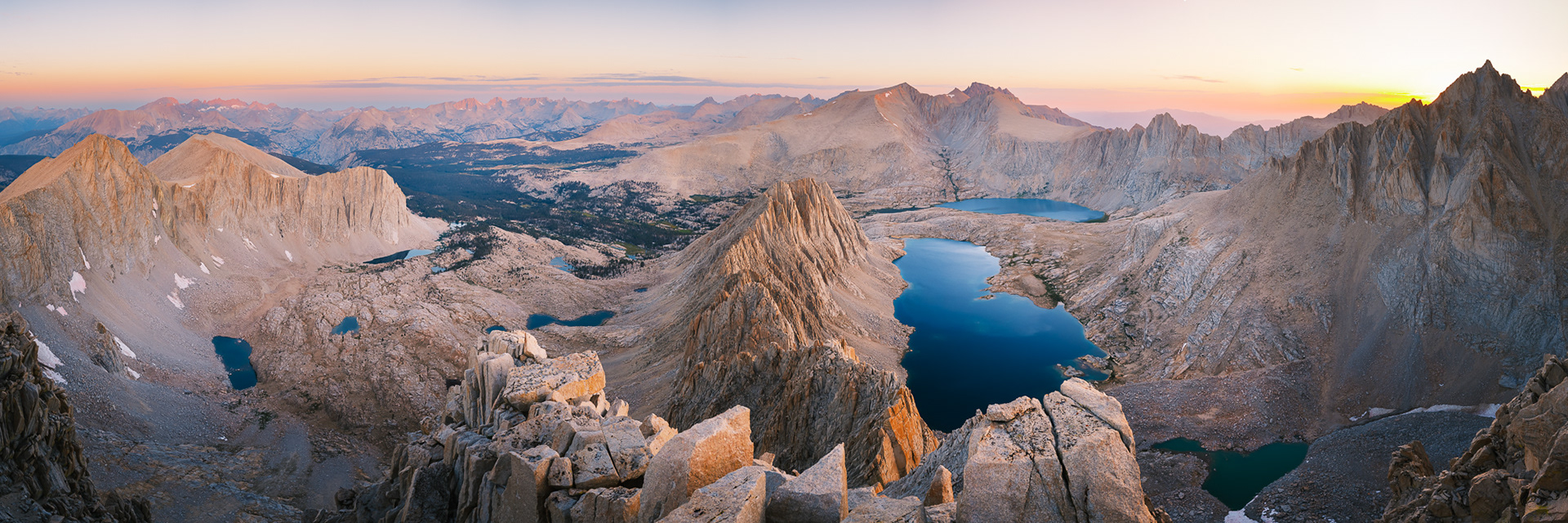
About the Sierra Nevada Mountains:
Geological History:
The Sierra Nevada is one of the most stunning geological features in the United States, stretching about 400 miles along California's eastern edge. This mountain range formed over millions of years through a complex series of geological events. It began with the accumulation of volcanic and sedimentary rocks during the Paleozoic and Mesozoic eras. The uplift of the Sierra Nevada started around 10 million years ago due to tectonic forces, with the eastern side rising dramatically along the Sierra Nevada fault system, while the western slopes gradually descended, forming the Central Valley. This uplift, combined with extensive glaciation during the Ice Ages, sculpted the iconic peaks, deep valleys, and alpine landscapes we see today.
Mountaineering and Hiking History:
The Sierra Nevada has a rich history of exploration and mountaineering. Indigenous peoples, like the Miwok and Paiute, have lived in these mountains for thousands of years, utilizing its resources and traversing its paths. However, the modern mountaineering era began in the mid-19th century with the Gold Rush, which brought adventurers into the region. John Muir, a naturalist and writer, was instrumental in popularizing the Sierra Nevada through his writings, advocating for its preservation, which eventually led to the creation of Yosemite National Park. His explorations, along with those of other pioneers like Clarence King and Joseph LeConte, laid the groundwork for mountaineering in the range. Over the years, the Sierra has become a mecca for hikers, climbers, and backpackers, with routes like the Pacific Crest Trail and John Muir Trail drawing enthusiasts from around the globe.
Notable Areas:
Mount Whitney: At 14,505 feet, it's the highest peak in the contiguous United States, located in the southern Sierra. Known for its challenging routes like the Mountaineer's Route, it's a coveted summit for many climbers. The views from its top are breathtaking, offering sights of the Owens Valley to the east and the Sierra landscape to the west.
The Palisades: This subrange within the Sierra Nevada is famed for its rugged, sharp peaks. Thunderbolt Peak, North Palisade, and Polemonium Peak are among its notable summits, offering some of the finest alpine rock climbing in the range. The area is less crowded, adding to its allure for those seeking solitude.
Kings Canyon National Park: Home to some of the deepest canyons in North America, this park features spectacular scenery with its high peaks, deep valleys, and the Kings River. The park includes areas like the Cedar Grove, where visitors can hike to Mist Falls, and the awe-inspiring General Grant Tree, one of the largest giant sequoias.
Yosemite National Park: Perhaps the most famous part of the Sierra Nevada, Yosemite is renowned for its dramatic waterfalls, such as Yosemite Falls, and iconic granite formations like Half Dome and El Capitan. It's a place where natural beauty meets human history, with ancient Native American sites, pioneer trails, and a legacy of conservation efforts spearheaded by figures like John Muir.
Each of these areas in the Sierra Nevada not only showcases the geological marvels of the range but also reflects the human interaction with nature through mountaineering, conservation, and recreation, making it a timeless treasure of California's landscape.
More about the Miwok and Paiute:
Both of these tribes of the Sierra Nevada have deep historical connections to the forests, mountains, and resources of the region, employing sustainable practices that shaped the landscape in ways that were both ecologically beneficial and culturally significant.
Miwok:
Forest Management: The Miwok practiced controlled burns, or cultural burning, to manage the forest. These burns were strategically set to reduce underbrush, clear deadwood, and promote the growth of certain plants like grasses and berries that were important for food. By doing so, they not only prevented larger, uncontrolled wildfires but also maintained open meadows for hunting and gathering. The practice of burning also helped in the regeneration of oak trees, crucial for acorns which were a staple in their diet.
Resource Utilization:
Acorns: A primary food source, acorns were gathered from various oak species, processed to remove tannins, and then ground into meal for making bread or mush.
Hunting and Fishing: Deer, rabbit, and other game were hunted, while salmon and other fish were caught from rivers. They used bows and arrows, nets, and traps, respecting a cycle of use that ensured sustainability.
Basketry: The Miwok were renowned for their basket-making, using materials like willow, sedge, and redbud. These baskets served various purposes from cooking to carrying, showcasing an intimate understanding of plant resources.
Medicinal Plants: They had extensive knowledge of local flora for medicinal purposes, utilizing plants for healing, remedies, and spiritual practices.
Cultural Practices: The Miwok had ceremonies and rituals tied to the land, including the use of certain areas for gatherings and the maintenance of sacred sites that were part of their spiritual and cultural life.
Paiute:
Forest Management: Like the Miwok, the Paiute used fire as a tool for land management. They conducted burns to encourage the growth of plants vital for food and medicine, manage wildland fuel loads, and promote biodiversity. This practice was not only about resource management but also about maintaining ecological balance.
Resource Utilization:
Pine Nuts: The Paiute were particularly noted for their use of pine nuts from the piñon pine, which they harvested in abundance, storing them for winter. This was both a food source and a trade item.
Agriculture: Although less emphasized than hunting and gathering, some Paiute groups practiced small-scale agriculture, growing crops like corn in areas where water was available.
Irrigation: They developed irrigation systems in the Owens Valley to support their agriculture, showing an advanced understanding of water management.
Crafts and Clothing: Paiute women were skilled in weaving, creating baskets and mats. Plant fibers were used for making clothing, with rabbit fur being a common material for warmth.
Cultural Practices: The Paiute had a deep spiritual connection to the land, with many stories, dances, and rituals linked to natural features like mountains, springs, and wildlife. Their cultural practices included the Ghost Dance, which was a response to the encroachment of European settlers and a way to spiritually reconnect with their lands.
Both the Miwok and Paiute had sustainable practices that not only met their immediate needs but also ensured the land's productivity for generations. Their methods of forest management and resource utilization were holistic, considering not just human needs but the health of the ecosystem as a whole. These practices are now recognized for their environmental wisdom, offering lessons in sustainable living that modern land management could learn from.

